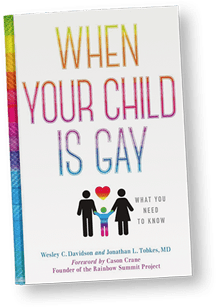Gay and Lesbian youths face greater risk of violence, according to the first nationwide study administered by the Centers for Disease Control and Prevention. This is the first time that the federal government’s biennial Youth Risk Behavior Survey investigated sexual identity.
PARTICIPANTS IN THE SURVEY
Some 15,600 students across the country, ages 14 to 17, took the survey that looked at more than 100 health behaviors, including two NEW questions: how do they identify themselves sexually, and also the sex of those with whom they had “sexual contact?”
The survey found that about eight percent of the high school population self-identified as gay, lesbian or bisexual. This figure equates to roughly 1.3 million students. Unfortunately, the survey did not include questions for transgender students to answer.
The report notes the fluidity of adolescent sexual identity:
• 3.2% of students chose “not sure.”
• 25% identified as heterosexual.
• 13.6 % identified were uncertain of their sexual identity.
• 2.8% described themselves as LGB although they had sexual contact with only someone of the opposite sex.
The Alarming Findings
While this survey does underscore similar previous findings that LGB students face disproportionate psychological problems compared to heterosexuals such as low self-esteem, truancy, greater drug abuse, for example, this survey points to a greater risk of VIOLENCE. Self-identified LGB students were:
• 3 x more likely to be raped than straight students.
• 29 % had seriously considered suicide.
• 1/3 at least had been bullied on school property.
• Twice as likely to have been threatened or injured with a weapon on school property.
What’s the Answer?
The survey did not concentrate on why LGB students are at such risk for violence.
It also did not include an explanation of what sexual contact is. The test was only given to students currently in high school.
According to Dr. Elizabeth Miller, Chief of Adolescent and Young Adult Medicine at Children’s Hospital of Pittsburgh, University of Pittsburgh Medical Center, attributes the violence to “ the intensity of homophobic attitudes and acceptance of gay-related victimization, as well as the ongoing silence around adolescent sexuality.” The marginalization of young people increases their vulnerability to exploitative and violent relationships.”
What Parents Can Do
Self- Acceptance, like hate, can begin at home. Says Dr. Miller, “we have to start conversations early with young people about healthy sexuality, attraction, relationships, intimacy and how to explore those feelings in as safe and respectful a way as possible.”
Source: gay-and-lesbian-youths-face-greater-risk-of-violence/nytimes/8/12/16

When Your Child Is Gay: What You Need To Know
For more detailed advice, see book, co-authored with a mother of a gay son and a psychiatrist, Jonathan L. Tobkes, M.D.